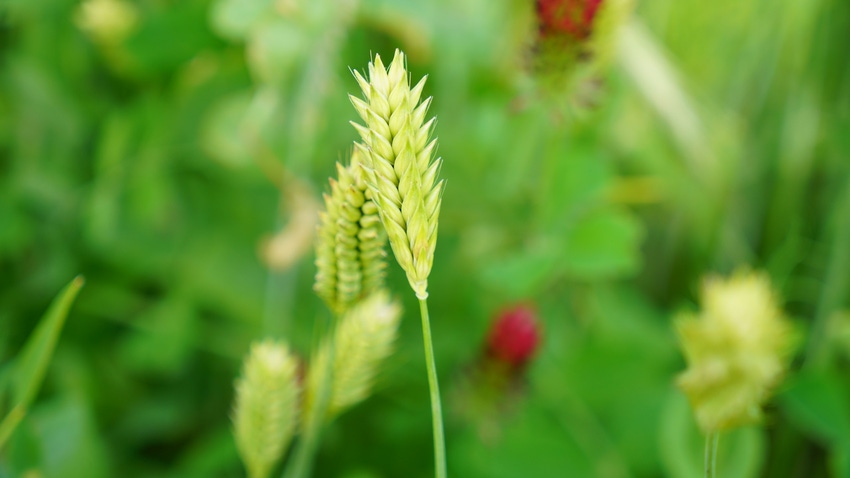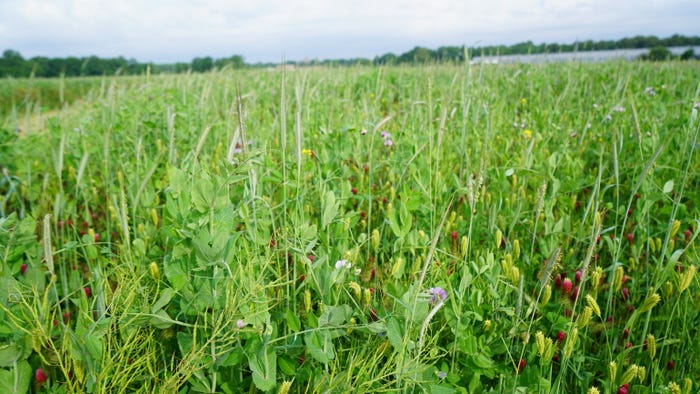
The University of Arkansas held a Soil Health Virtual Field Trip on Nov. 5. The event featured insights from two Arkansas farmers, Robby Bevis and Adam Chappell. Both men are members of the Arkansas Soil Health Alliance and avid proponents of no-till crop production and the use of cover crops.
Over the hour, Bevis and Chappell discussed what it takes to successfully implement a cover crop program. They covered potential challenges. (Surprisingly, the Green Bridge isn’t one of them.) And they encouraged producers to rethink their farm goals to improve profitability.
“Too many farmers think in order to be profitable you have to boost yield. Sometimes we just keep spending more and more money chasing the mighty yield and it doesn’t equal profitability,” Robby Bevis said.
“What’s the purpose of being the highest yield producer and still going broke?”
Bottom line
Bevis, a fifth-generation farmer in Central Arkansas, grows 1,800 acres of corn, rice and beans. He started experimenting with covers and soil health in 2012 and is now close to having 100% of his acreage in cover crop. This is move Bevis said has reduced irrigation, tillage and fertility inputs.
“We’ve done major changes in our operation and the amazing thing is we haven’t seen a big reduction in yields. The biggest change we’ve seen is to our bottom line. We’re not spending as much money,” Bevis said.
“The margin is what we’re after. The best way to do that is cut expenses.”
Adam Chappell used a sports analogy to drive home the point.
“If you’re in this for the long haul, it’s about base hits. Cover crops, no-till, reducing inputs, it’s just a winning formula.”
Cutting expenses
Back in 2009, Chappell said he was spending more than $100 per acre to control pigweed. With more than 7,000 acres of row crops, the numbers didn’t add up. That’s when he stumbled upon a cover crop video on YouTube.
“This guy was planting pumpkins into this green grass that was about six feet tall. I’d never seen anything like it,” Chappell said. “I followed his videos all summer, and never saw any weeds.”
That fall he planted 300 acres of cereal rye, and the next year he says his herbicide bills were cut in half. He hasn’t looked back.
“Even in years where prices are depressed like they have been lately we can realize profit because our inputs are so low,” Chappell said. “That’s not just herbicides, but irrigation, fertility, we’ve cut out all tillage passes, so that’s savings.”
The Soil Health Virtual Field Trip was moderated by Matt Fryer, soil health instructor for the University of Arkansas Division of Agriculture. Fryer shared University of Arkansas data on cotton yields and associated expenses in fields with and without cover crops that appeared to support the farmers claims.
The data showed a 7% increase in cotton lint yield in the fields with cover crops as opposed to fields with none planted. While there was a 3% increase in operating expenses associated with planting cover crops, when you averaged those expenses across pounds of cotton harvested, the fields with cover crops saw an 8% decrease in operating expenses.
“The goal of soil health is reducing inputs, which will cut expenses. How soon we see these benefits occur can differ across different fields,” Fryer advised.

Green Bridge?
An oft-cited deterrent to planting cover crops is the green bridge, a method in which insect pests and pathogens feeding on the cover crop survive long enough to infest the cash crop. But both Bevis and Chappell said that hasn’t been an issue on their operations.
“You hear a lot about the green bridge and how it’s going to get us, but I’ve been in cover crops for eight years now and have had hardly any insect issues,” Bevis said. “Sure, we’ve had to spray for worms a time or two, but overall, we have not had those problems.”
Chappell reported a reduction in insect pests. “I attribute that to increased beneficial populations because we’ve got habitat for them, so we’re not having to rely on insecticide as much.
“I hear all the time about the green bridge and you’re going to cause insect problems with cover crops. Well, not if you use your head. Don’t exaggerate monocultures, don’t plant soybeans into winter peas. Get diversity into your cover crop mix and crop rotation.”
Which cover to plant?
During the question and answer session at the end of the program, Bevis, Chappell and Fryer were asked which cover crops or cover crop mixes were most effective.
“When we’re designing a program, we put most of our emphasis on grass,” Chappell said. “That’s primarily for above ground biomass and below ground root mass. Grasses are just unrivaled in both of those areas. Two grasses I really like are oats, specifically cosaque oats, and cereal rye. If the soil is left undisturbed for a 4 – 5-year period with that grass, it is really going to come alive.
“If you have a lot of soybeans in your rotation, you probably don’t need a lot of legumes,” he continued. “If you’re following soybeans with corn, I’m finding you don’t need those legumes. Stick with your grass base and throw a brassica in there.”
Fryer encouraged growers to keep their goals in mind. “What cash crop are you planting? You don’t want to follow a solid grass cover crop with a grass cash crop,” he said. “Diversity is very crucial to avoiding potential problems.”
Bevis’ advice: start simple. “Any cover is better than no cover. I’m not a fan of wheat, but it’s better than tillage and nothing. So, just keep it simple when you start and gain some confidence in what you’re doing.”
Planting window
Questions were also asked about aerial seeding and appropriate planting windows, particularly in a wet fall like many areas of the Mid-South have seen this year.
“Aerial seeding in general requires a seed that’s small and spreads good. The oats that we use don’t aerial seed at all. Winter peas don’t aerial seed very well. Stick with things like ryes, barleys, clover for legumes,” Chappell advised.
“As far as window to plant, I’ve planted pure grass mixes in late January and had great cover come first of May. You just have to pick your spots. The later you get the more seed you have to plant. These are all good things to know before you buy your seed.”
The Soil Health Virtual Field Trip is part of the Arkansas Soil and Water Virtual Field Trip Series. You can view all past episodes online.
About the Author(s)
You May Also Like






